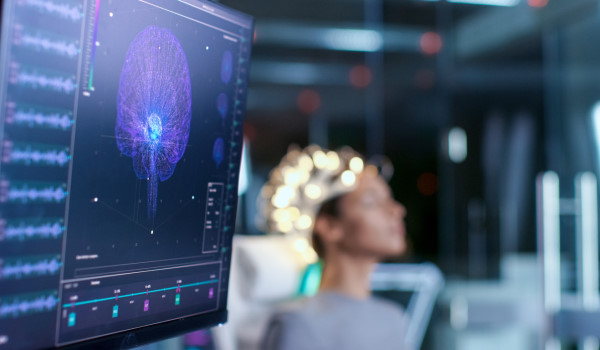Neuralink's Journey and the Broadening Horizons of Brain-Computer Interface Technology
Neuralink, Elon Musk's brain-implant company, has just revealed that it received approval from the U.S. Food and Drug Administration (FDA) for its inaugural human clinical trial. This development, disclosed on Thursday, signifies a major step forward for the company, especially given its previous difficulties in securing this crucial approval.
While Neuralink refrained from sharing specific objectives for the upcoming trial, this FDA endorsement is still viewed as a major stride in their quest to advance their brain-computer interface (BCI) technology. Musk’s vision for Neuralink's brain implants is broad and ambitious, ranging from the potential treatment of obesity, autism, depression, and schizophrenia, to more futuristic concepts like enabling web browsing and telepathy.
In the past, Neuralink's path has been mired with challenges, including those outlined by the FDA concerning the lithium battery of the device, the possibility of the implant's wires migrating within the brain, and the difficulty of safely extracting the device without causing harm to brain tissue. The company has also been the subject of multiple federal investigations, including probes regarding animal testing practices and potential violations of animal-welfare.

What is Neuralink, and what makes this company's work so significant in the BCI landscape?
Founded by Musk in 2016, Neuralink is committed to developing a surgically implantable BCI called “the Link." This brain chip, designed to decode and stimulate brain activity, could potentially revolutionize the way humans interact with computers and digital devices.
The Link, once implanted under the skull, receives information from neural threads distributed across different sections of the brain, particularly those controlling motor skills. Each of these threads contains 1,024 electrodes, capable of recording and emitting electrical currents. Given the precision required for this process, Neuralink has also developed a neurosurgical robot to handle the delicate insertion procedure.
One of Neuralink's primary goals is to assist individuals immobilized by paralysis by helping them regain lost communication skills. In the future, the company intends to restore motor, sensory, and visual functions and to offer treatment for a wide range of neurological disorders. In essence, Neuralink aspires to enhance human memory, processing speed, and cognitive abilities by creating a direct interface between the human brain and digital devices.
From improving communication for non-verbal individuals to treating neurological conditions, the applications of this invasive BCI technology are far-reaching. The device could offer enhanced control of prosthetics or exoskeletons, allowing people with paralysis or amputations to regain some degree of mobility and independence. Additionally, the Link could potentially monitor mental health symptoms and deliver targeted electrical stimulation as a treatment for various conditions, including burnout, fatigue, anxiety, and depression.
While the road ahead for Neuralink and its BCI technology is fraught with both challenges and possibilities, this FDA approval is a promising start. As the company moves forward with human trials, the world will be watching to see whether Neuralink can transform its ambitious vision into a reality, thus reshaping our understanding of the human brain and its interface with technology.
Beyond Neuralink: Exploring the Dynamic Landscape of BCI Companies Innovating in Brain-Computer Interface Technologies
As we delve further into Neuralink's pioneering strides in invasive brain-computer interface (BCI) technology, it's instrumental to broaden our perspective and evaluate the encompassing BCI arena. In our recent article ‘Top 10 Companies Shaping the Brain-Computer Interface Landscape: Invasive vs Non-Invasive BCI Technology’ we listed a plethora of BCI companies, from stalwarts to newcomers, are fervently pushing the envelope in both invasive and non-invasive BCI methodologies, each presenting distinctive advantages and challenges. Neuralink and Blackrock Microsystems are setting the pace in invasive BCI, employing surgical implantation of electrodes to facilitate high-resolution neural communication, though such procedures pose certain complexities and inherent risks.
On the flip side, BCI companies like Emotiv, Neurable, and Kernel are taking the helm in non-invasive brain-computer interface technology, deploying external sensors for neural signal detection, thereby enhancing safety, user-friendliness, and affordability. Nonetheless, these instruments grapple with the issue of diminished signal resolution. Companies with a dual focus, such as OpenBCI and g.tec medical engineering, cater to both invasive and non-invasive BCI modalities.
In a novel approach, CTRL-labs, now under the Facebook umbrella, interprets signals from arm muscles to interact with technology. Meanwhile, BrainCo and MindMaze harness non-invasive BCI to accentuate focus and aid neurorehabilitation, respectively. Given the constant progress in these technologies, the landscape of BCI companies is evolving, setting the stage for a revolution in our digital interactions and offering groundbreaking solutions for neurological disorders. Recently, Neuralink has made a significant leap forward, securing FDA approval for its inaugural human clinical trial, a key progression toward its vision in the BCI space.
Topics: NeuroTech
